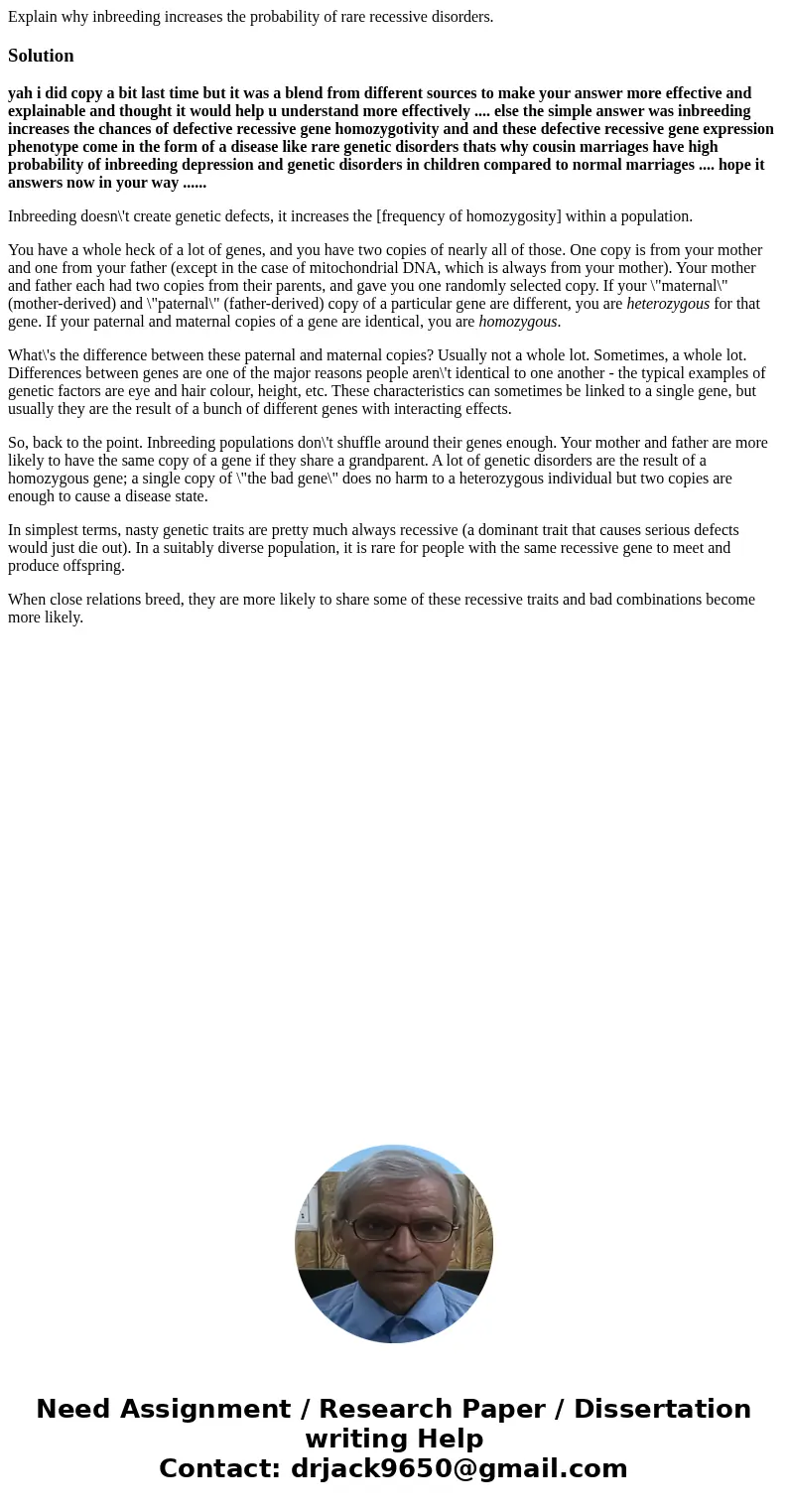Explain why inbreeding increases the probability of rare rec
Solution
yah i did copy a bit last time but it was a blend from different sources to make your answer more effective and explainable and thought it would help u understand more effectively .... else the simple answer was inbreeding increases the chances of defective recessive gene homozygotivity and and these defective recessive gene expression phenotype come in the form of a disease like rare genetic disorders thats why cousin marriages have high probability of inbreeding depression and genetic disorders in children compared to normal marriages .... hope it answers now in your way ......
Inbreeding doesn\'t create genetic defects, it increases the [frequency of homozygosity] within a population.
You have a whole heck of a lot of genes, and you have two copies of nearly all of those. One copy is from your mother and one from your father (except in the case of mitochondrial DNA, which is always from your mother). Your mother and father each had two copies from their parents, and gave you one randomly selected copy. If your \"maternal\" (mother-derived) and \"paternal\" (father-derived) copy of a particular gene are different, you are heterozygous for that gene. If your paternal and maternal copies of a gene are identical, you are homozygous.
What\'s the difference between these paternal and maternal copies? Usually not a whole lot. Sometimes, a whole lot. Differences between genes are one of the major reasons people aren\'t identical to one another - the typical examples of genetic factors are eye and hair colour, height, etc. These characteristics can sometimes be linked to a single gene, but usually they are the result of a bunch of different genes with interacting effects.
So, back to the point. Inbreeding populations don\'t shuffle around their genes enough. Your mother and father are more likely to have the same copy of a gene if they share a grandparent. A lot of genetic disorders are the result of a homozygous gene; a single copy of \"the bad gene\" does no harm to a heterozygous individual but two copies are enough to cause a disease state.
In simplest terms, nasty genetic traits are pretty much always recessive (a dominant trait that causes serious defects would just die out). In a suitably diverse population, it is rare for people with the same recessive gene to meet and produce offspring.
When close relations breed, they are more likely to share some of these recessive traits and bad combinations become more likely.

 Homework Sourse
Homework Sourse